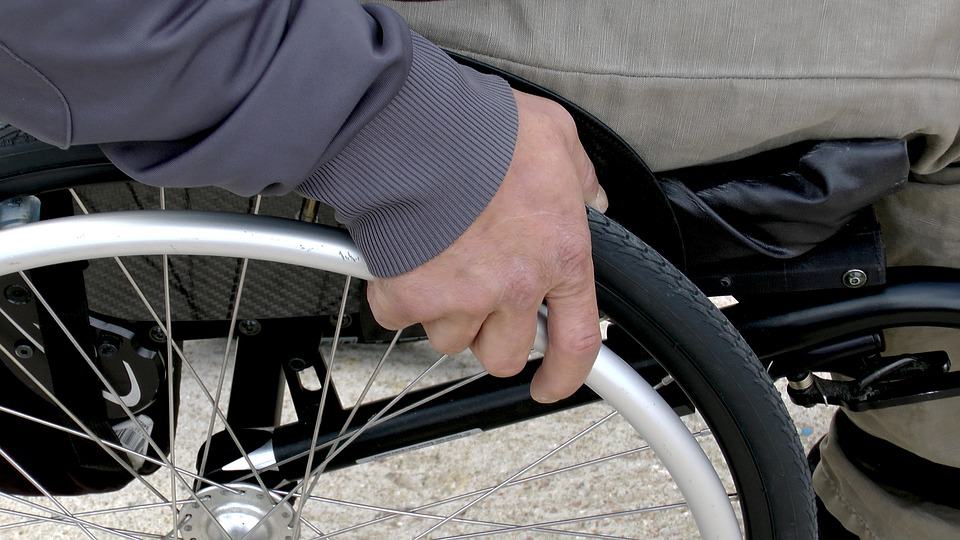Are you ready for an emergency? Now is the time to customize a preparedness kit to your individual needs, from specific items for those with mobility, vision, communication, or health issues, to basics that no person should be without.
If you have special needs or a medical condition, it is even more vital to be prepared for anything. This can be an overwhelming task when you consider all of the things that you utilize and rely on daily. To ensure you don’t forget anything, consider compiling your own checklist, including all of the aids, equipment, and tools that you require to preserve your autonomy.
Customize a preparedness kit for your individual needs:
From breathing issues to legal-blindness, physical limitations to hearing-loss, be prepared for whatever comes. Storms, evacuations, or natural disasters can force you from your home; are you ready?
Whatever your needs may be, customize a preparedness kit for an emergency:
Mobility Issues
Do you use a walker, wheelchair, or scooter? Don’t get caught ill-prepared when an emergency strikes. Keep necessary aids and supplies at home, in the car, and on-the-ready, in case you need to evacuate your home swiftly.
Some things to include in your preparedness plan are:
- Put-together tire patch kits for wheelchairs and scooter and keep on-hand at all times, including in your vehicle, purse, or evacuation-bag.
- Invest in a lightweight transport chair, if feasible. It will make it much easier to transfer in a hurry.
- Don’t forget about supplies for service pets, if applicable. This includes vet records, any medications, extra food, and a cache of water.
- Keep your wheelchair secured near the bed for easy access in an emergency.
Vision Impairment
It can be scary to navigate an emergency situation when you are visually-impaired. Make the occurrence easier on yourself by being prepared. Consider the following items to keep in your preparedness kit:
- Stow spare eye-drops or medications prescribed for conditions such as glaucoma on-hand.
- Again, make sure you have adequate supplies for your service dog, if applicable.
- Tuck a spare pair of eyeglasses or magnifiers in your preparedness kit.
- Use fluorescent tape to label your emergency supplies for easier identification when needed.
Respiratory Illness
They say that if you can’t breathe, nothing else matters. If you live with respiratory issues or illness, make sure that you are able to comfortably breathe when leaving the confines of home in an emergency. Some things to consider are:
- Masks and respiratory aids should always be carried with you, as well as in any preparedness kit.
- Keep oxygen tanks charged and secured to the wall to prevent accidents later, like during an earthquake or other jarring natural disaster.
- Talk to your providers about portable oxygen tanks that will make it easier if you have to ‘bug-out’ of your home.
Communication Issues
For individuals that have communication issues, such as hearing loss or speech difficulty due to a stroke, leaving home in a hurry can be complicated. How will you let rescuers or caregivers know what is going on? Be ready for whatever happens by using some tips to be prepared for the worst:
- Buy a weather radio with a visual display to know when you will need to evacuate – as well as when you can return home.
- Keep a signaling device on-hand and nearby, like an air-horn or bell, for attention during an emergency.
- Use labels on emergency supplies and reservoirs for others to easily identify; ask case managers about labels to help with this.
- Make sure that you keep a laptop charger for the automobile if you rely on your computer for texting to communicate with others. Get one that will plug-in to your car’s cigarette lighter.
Basic Checklist Items:
There are some other basic supplies and tools that The Red Cross suggests every individual keeps on-hand for emergency situations and ‘bug-outs’. If you do find yourself being evacuated, make sure to secure your home and take the keys with you.
Some items to stock in your preparedness kits include:
- Health information, prescriptions, and related-documentation.
- Contact information for loved ones, caregivers, and providers.
- Cash.
- A fully-charged phone.
- A pair of scissors.
- Bleach, to disinfect.
- Hygiene items and products.
- Flashlights and extra batteries.
- Food reserves and water for yourself and your pets too.
- Phone and laptop charger.
- A pair of work gloves and extra apparel.
- First aid kit.
- Reflective vest and rain ponchos for the car.
- A basic tool kit to keep in the vehicles, including booster cables and road flares, ideally.
- Blankets.
- Maps, since it is possible you won’t have GPS or internet connectivity.
- Plastic bags, which serve a variety of purposes in an emergency.
How prepared are you for an emergency that drives you from your home? Talk to the experts at Pacific Mobility about aids and devices that will travel with you – and that will help you become more prepared and comfortable during a crisis.
President, Husband, Father, Grandfather Graduate of UC Davis- Bio Sci Major- Go Aggies! Jeff has extensive experience in all of Pacific Mobility’s products and services, and specializes in accessibility products as well as stairlifts, ceiling lifts and custom wheel chairs. His hobbies include spending time with family, gardening, mountain biking, exercising and off road motorcycle riding.
24 years as Owner/President of Pacific Mobility Center – selling, installing, and servicing stairlifts, porch lifts, ceiling lifts, pool lifts, handicap ramping, specialty wheelchairs, scooters, power wheel chairs, and other power mobility devices
Certified Environmental Access Consultant since 2008
Licensed General Contractor since 1998
Certified Aging in Place Specialist since 2016
Board Member for Home Access Professionals
Member of Association of Members of the Accessibility Equipment Industry (AEMA)




